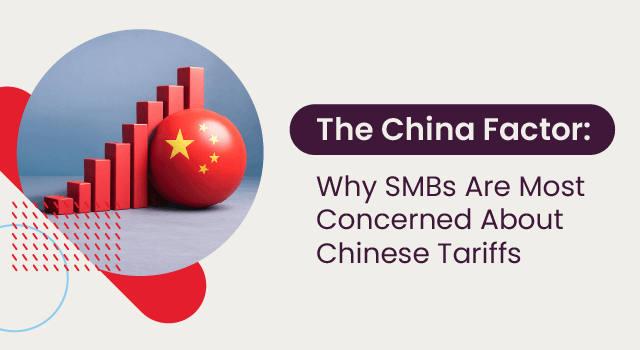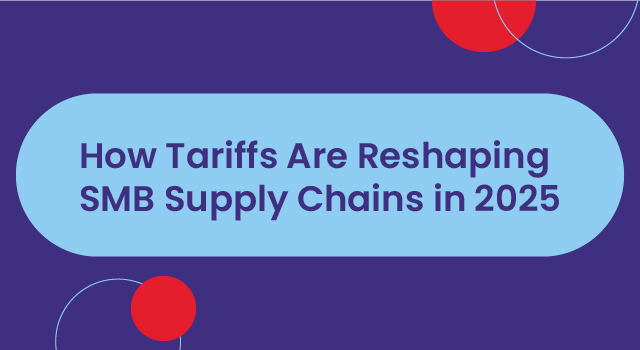What’s in this blog?
Learn about the different types of inventory management strategies, their goals, strengths, and weaknesses.
How to choose an inventory management strategy
In modern business, inventory management strategies have become exceedingly important in helping ensure operational efficiency, customer satisfaction, and financial success, making it one of the markers of business success.
That’s why businesses across industries constantly seek to discover methods for inventory management that optimize their stock levels and streamline their supply chain operations, offering a path to greater success.
This article highlights the top 20 types of inventory management strategies, exploring their significance and why implementing them is crucial for businesses.
What is an inventory management strategy?
In simplest terms, it refers to a set of practices that aid in planning and overseeing inventory procurement, management, and utilization.
Additionally, an operations strategy for inventory management ensures that these processes are executed by maximizing efficiency and minimizing costs, allowing the business to make informed decisions regarding replenishment cycles, stock levels, and supply chain optimization.
Why implement an inventory management strategy?
Implementing effective inventory management strategies becomes necessary if the business wants to achieve operational excellence, maintain competitiveness, and meet the ever-changing demands of the market.
Inventory management strategies provide the following five benefits:
1. Cost reduction and efficiency improvement:
Having an optimized methodology for inventory management helps a company minimize carrying costs, reduce the risk of stock-outs, and streamline supply chain operations. This, in turn, enhances the business’s overall cost-effectiveness and operational structure.
2. Optimizing inventory levels
With methods for inventory management like demand forecasting and inventory optimization, businesses can also maintain an optimal level of inventory that aligns with demand, which will minimize excess inventory and maximize the utilization of resources.
3. Minimizing stock-outs and overstock situations
When you run a business, being able to minimize stock-outs and reduce excess stock is crucial for maintaining optimal inventory levels, and using some of the top stock management strategies, you can effectively mitigate these risks.
4. Enhancing customer satisfaction
Customer-based inventory management strategies lead to greater customer satisfaction and loyalty via timely order fulfillment and product availability, ultimately driving business growth and success.
5. Streamlining operations
By using technology and data analytics in inventory management strategies, businesses can streamline processes and use resources more efficiently, helping them become more agile and competitive.
20 Inventory Management Strategies
Let’s break down the top inventory management strategies that will help streamline your inventory management process:
1. Demand planning
Demand planning is an operations strategy for inventory management that involves forecasting future customer demand for products or services, which then helps businesses anticipate demand accurately and optimize inventory levels.
By incorporating demand planning into their toolkit, businesses can minimize stock-outs, reduce excess inventory, and improve overall inventory turnover. For example, in retail inventory management, demand planning accurately predicts the level of inventory required for seasonal products.
Pros
- Enhanced customer satisfaction
- Optimized inventory levels
- Improved resource allocation
Cons
- Reliance on accurate demand forecasts
- Potential for forecasting errors
Learn more about Demand Planning.
2. Inventory optimization
Inventory optimization involves determining the optimal levels of inventory by considering factors such as lead times, demand variability, and cost constraints. This strategy enables a business to strike a balance between holding costs and customer service levels. For instance, a manufacturer may utilize inventory optimization and employ inventory optimization software to adjust safety stock levels based on fluctuations in demand variability and lead times.
Pros
- Improved inventory turnover
- Reduced holding costs
- Enhanced operational efficiency
Cons
- Complexity in implementation
- Dependency on accurate data and algorithms
Learn more about Inventory Optimization.
3. Inventory ordering
One of the most crucial stock management strategies is inventory ordering, which means determining when and how much inventory to reorder from suppliers to maintain your stock levels. This is important in helping avoid stock-outs and minimizing excesses. For example, a distributor uses automated inventory ordering systems to generate purchase orders based on predefined reorder points and supplier lead times.
Pros
- Streamlined procurement processes
- Improved inventory availability
- Reduced stock-outs.
Cons
- Dependency on accurate demand forecasts
- Potential for overordering or underordering
Learn more about Inventory Ordering.
4. Supplier performance monitoring
Supplier performance monitoring allows one to evaluate suppliers’ performance for factors like delivery reliability, quality, and responsiveness. This is essential for standardization, smooth operation, and addressing problems like late deliveries, quality defects, and communication gaps. For instance, manufacturers track supplier delivery times and quality ratings to mitigate supply chain disruptions.
Pros
- Improved supply chain visibility
- Enhanced supplier relationships
- Reduced risk of supply disruptions
Cons
- Dependency on accurate performance metrics
- Potential for supplier disputes
Learn more about Supplier Performance Monitoring.
5. ABC analysis
Another valuable technique is ABC analysis, a method used in inventory management to classify items into three categories based on their importance and contribution to overall sales. This strategy assists businesses in optimizing resource allocation. For instance, a retailer may apply this approach to adjust inventory levels for category A items, which typically have high sales volume and profitability.
Pros
- Prioritization of inventory management efforts
- Optimized resource allocation
- Improved inventory turnover
Cons
- Complexity in categorization
- Potential for overlooking lower-value items
Learn more about ABC Analysis.
6. Safety stock
Safety stock means holding extra inventory readily available in your warehouse to limit the risk of stock-outs caused by demand variability or supply disruptions. This inventory strategy in supply chain management provides a buffer to ensure continuity in your operations and customer satisfaction. For instance, a distributor can use this strategy to react and accommodate sudden spikes in customer orders, especially when supplier delays occur.
Pros
- Risk mitigation
- Improved customer service levels
- Enhanced supply chain resilience
Cons
- Increased holding costs
- Potential for excess inventory.
Learn more about how to calculate Safety Stock.
7. Inventory forecasting
Another method of inventory management is forecasting, which means predicting the future—much like demand planning. This strategy covers the demand for goods. Manufacturers using inventory forecasting models can anticipate seasonal demand fluctuations and adjust production schedules accordingly to optimize inventory levels, reduce stock-outs, and improve customer satisfaction.
Pros
- Improved inventory accuracy
- Better resource allocation
- Enhanced supply chain efficiency
Cons
- Dependency on accurate data and forecasting models
- Potential for forecasting errors
Learn more about Inventory Forecasting.
8. PAR levels
PAR (Periodic Automatic Replenishment) levels refer to predetermined inventory thresholds that trigger automatic replenishment orders when reached. This helps businesses retain consistency of stock levels and reduce any manual inventory management steps. For example, a healthcare facility can set PAR levels for medical supplies to ensure uninterrupted patient care via efficiency in inventory management without having to look at it themselves.
Pros
- Automated replenishment
- Reduced stock outs
Cons
- Dependency on accurate PAR level settings
- Potential for overstocking
9. Just-in-Time (JIT) inventory
JIT (Just-in-Time) inventory strategy minimizes the holding costs since it works by ordering and receiving inventory only when production or customer orders require it. This inventory management strategy reduces waste, streamlines the supply chain operations, and increases efficiency.
Pros
- Reduced inventory holding costs
- Improved cash flow
- Enhanced efficiency
Cons
- Dependency on reliable suppliers
- Risk of stock-outs during supply disruptions
10. Dropshipping
Dropshipping is a method where retailers sell products without stocking inventory. Instead, they rely on suppliers directly fulfilling customers’ orders, offering a flexibility and cost-saving option that removes the need for inventory management entirely. Here e-commerce retailers will team up with dropshipping suppliers to broaden their product range and enhance customer retention and satisfaction.
Pros
- Reduced inventory management overhead
- Expanded product offerings
- Cost savings
Cons
- Limited control over product availability and shipping
- Reliance on supplier reliability
11. Cross-Docking
Cross-docking unloads incoming goods from suppliers from inbound vehicles and loads them directly onto outbound vehicles. It minimizes warehousing and storage needs, such as distribution centers that transfer products from docks to outbound trucks to happy customers.
Pros
- Reduced warehousing costs
- Improved order fulfillment speed
- Enhanced supply chain efficiency
Cons
- Dependency on efficient logistics operations
- Potential for increased transportation costs
12. FIFO and LIFO
FIFO (First-In, First-Out) and LIFO (Last-In, First-Out) are customer-based inventory management strategies that determine the cost of goods sold and ending inventory.
FIFO works by selling the oldest inventory, while LIFO assumes the last things in (the newest inventory) are sold first. Retailers often use FIFO to ensure that perishable goods are sold before expiration.
Pros
- Accurate inventory valuation
- Optimized tax strategies
- Improved financial reporting
Cons
- Complexity in implementation
- Potential for distortions in financial statements
13. Consignment inventory
The consignment inventory strategy includes the supplier retaining ownership of goods and supplying them to a consignee, who sells them. This helps businesses reduce inventory risk while continuing to have access to many products. For example, a retail store can employ this strategy as it accepts inventory, expands its product offerings, and retains limited inventory costs.
Pros
- Reduced inventory risk
- Improved cash flow
- Increased product variety
Cons
- Dependency on supplier agreements
- Potential for lower profit margins
14. Economic Order Quantity (EOQ)
Economic Order Quantity (EOQ) is a formulaic inventory control method that marks up the best possible order quantity for stock to lower inventory and related costs. Businesses can use this strategy to balance too much stock and too little, such as when manufacturers use EQQ to determine ideal order quantities for raw materials.
Pros
- Cost-effective inventory ordering
- Optimized inventory levels
- Improved cash flow
Cons
- Assumptions may not always hold true
- Complexity in calculation
15. Perpetual inventory management
Perpetual inventory management helps measure inventory levels in real-time using inventory demand and supply software or barcode technology. This strategy is good for retailers who want to keep track of inventory movements. It also helps reduce stock-outs and improves the overall efficiency of the business.
Pros
- Real-time inventory visibility
- Improved accuracy
- Enhanced operational efficiency
Cons
- Initial investment in technology
- Dependency on accurate data entry
16. Minimum Order Quantity (MOQ)
Minimum Order Quantity (MOQ) means the lowest possible amount of a product that a buyer is willing to purchase or a supplier is willing to sell. Knowing this lets businesses optimize procurement processes and leverage economies of scale. Such a tool is important to retailers, especially those negotiating MOQs with suppliers for cost-effective procurement and inventory management.
Pros
- Cost savings through bulk purchasing
- Reduced ordering frequency
- Optimized inventory levels
Cons
- Potential for inventory obsolescence
- Limited flexibility in ordering
Learn more about Minimum Order Quantities.
17. Six Sigma and Lean Six Sigma
These methodologies aim to catch and remove defects, errors, and inefficiencies in business processes, such as those found in handling processes. This leads to reduced lead times and costs, while also enhancing customer satisfaction through data-driven approaches, continuous improvement, employee involvement, and their application across diverse industries.
Pros
- Improved process efficiency
- Reduced waste
- Enhanced quality
Cons
- Initial investment in training and implementation
- Potential for resistance to change
18. Bulk shipping
Bulk shipping allows the transport of larger quantities of goods in single shipments, thus allowing for lower per-unit costs compared to smaller shipments. This is one of the best options for wholesalers who can consolidate multiple orders through multiple suppliers into a single delivery.
Pros
- Cost savings through economies of scale
- Improved logistics efficiency
- Reduced carbon footprint
Cons
- Dependency on sufficient demand volume
- Potential for inventory holding costs
19. Batch tracking
Batch tracking assigns unique identifiers to batches of inventory items, therefore tracking their movements through the supply chain. This lets businesses track products to their origins and serve a greater customer satisfaction guarantee via an assurance of quality control, such as for food manufacturers who use batch tracking to trace source ingredients and respond immediately to quality issues/recalls.
Pros
- Improved product traceability
- Enhanced quality control
- Regulatory compliance
Cons
- Initial investment in tracking systems
- Complexity in implementation
20. Reorder points
Lastly, we have Reorder Points, an inventory management technique that indicates when companies need to order more stock to avoid running out. This reduces the risk of stock shortages and associated liabilities. Retailers use this strategy by supplementing with sales data from previous years and lead times so that customers don’t miss out on possible products.
Pros
- Automated replenishment
- Reduced stock outs
Cons
- Dependency on accurate demand forecasts
- Potential for overstocking
Conclusion
Adopting effective inventory management strategies is essential for businesses to thrive financially and operationally. By employing techniques like demand planning, inventory optimization, and monitoring suppliers, and safety stock, businesses can streamline operations, cut costs, and keep customers satisfied. These strategies also help unlock cash that may be tied up in unnecessary or slow-moving stock, freeing up resources for further growth and investment.
Netstock provides extensive demand and supply planning solutions, including the top 20 inventory management strategies highlighted above. These strategies can assist with planning, managing, and optimizing your inventory, leading to sustainable growth in today’s competitive marketplace.




